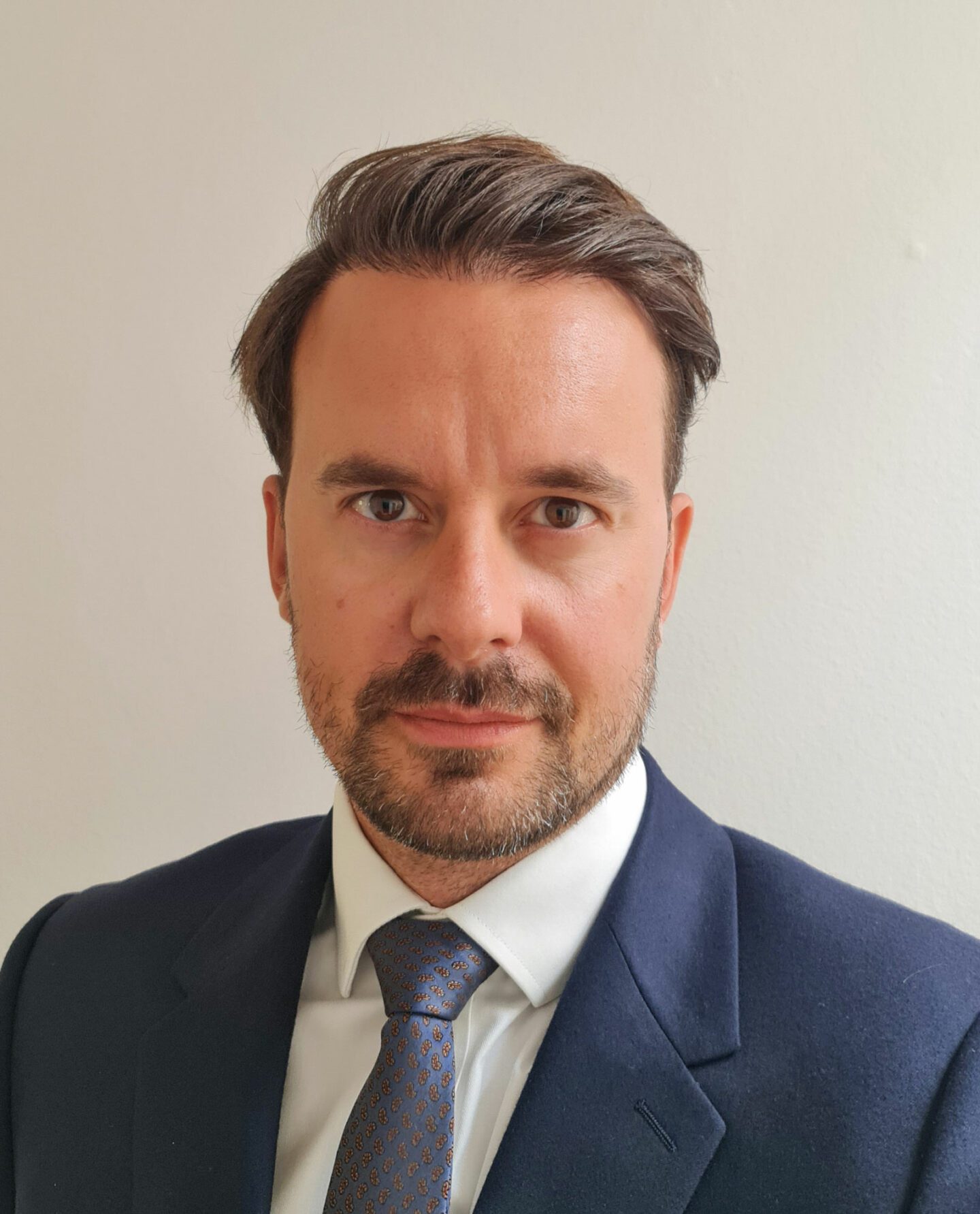
Calculo Evolution Fund has received The Hedge Fund Journal’s CTA and Discretionary Trader award for Best Performing Fund in 2022 in the Systematic Trend Following CTA (Commodities) category, based on risk adjusted returns.
“I never thought about doing any asset classes other than commodities. I understand commodities and need to specialize to develop my own position and find a competitive edge in the market,” says Calculo Capital founder, Philip Engel Carlsson.
Commodities can exhibit bigger directional moves, in an isolated and idiosyncratic way, due to unique events such as crop damage or hurricanes, which then generate alpha opportunities that can be long term or short term. Calculo’s systems are especially well placed to take advantage of shorter term moves that could sometimes prove too ephemeral for some CTAs to capture. If a typical trend following CTA aims to catch perhaps one third of a large trend move over a single position holding period, Calculo wants to take many bites out of it, which might add up to 5, 10 or 20 trades.
“I never thought about doing any asset classes other than commodities. I understand commodities and need to specialize to develop my own position.”
Philip Engel Carlsson, Founder, Calculo Capital
Carlsson has spent his entire career in commodities, transitioning from a traditional discretionary fundamental approach to a systematic technical philosophy: “I started with very fundamental views, using fundamental data to predict market prices, at Saxo Bank between 2006 and 2008, and was often quoted in the media. I later did some modelling and determined that it would be difficult to predict prices while sitting in Denmark, and that a technical approach would be better”. The word Calculo comes from ‘calculation’ and simply denotes that the fund is a systematic one using only algorithms.
Proprietary systems
After a brief spell proprietary trading cross border electricity markets, first at NEAS Energy and then co-founding a power trading company, Utility North A/S, Carlsson then built a state-of-the-art power trading system, and sold it to his old employer NEAS. The system was designed to trade OTC electricity, buying in one country and selling into other markets wherever the price was highest.

Philip Engel Carlsson, Founder, Calculo Capital
Carlsson subsequently developed a very different front end trading platform for the Calculo strategy: a charting, trading and risk management engine, to avoid the black box problem of some systems and provide automatically generated real time portfolio analytics gauging the depth of signals and trading. “This is all low latency and is very much tailored to the needs of Calculo’s trading and risk management. It can accommodate many broker relationships, strategies, and funds, as well as user specific rights,” says Carlsson, who programs in C-Sharp and Python.
Optimising risk adjusted returns in trend following
Average holding periods of 1-10 days might lead investors to categorise Calculo as being at least partly a “short term trader”, but the manager never trades against the trend and places himself firmly in the trend following group. Calculo’s proprietary AI techniques do predict price reversals, but simply exit rather than trading countertrend. The objective of shorter-term trades and AI informed exits is to deliver less volatility than a classic trend follower.
The strategy has been adapted from a traditional trend following approach to reflect the changing market patterns and behaviour that Carlsson has observed over the past few decades: “When CTAs started in the 1980s it was a very different market, with less swings. Now there are more spikes and retracements and more short term volatility, which made it difficult for some longer term CTAs at least until 2020”.
“Short term trend follower” is not necessarily the right label either, because Calculo aims to extract multiple profits from a long term trend, which, added together could make up a significant chunk of the trend (or possibly sometimes might even add up to a larger number of points or ticks, if a market regularly retraces and then recovers its direction). “We aim to capture and take profit multiple times over the course of a directional move,” stresses Carlsson.
Moreover, Calculo does expect to participate in a commodity “super cycle”, though once again to do so with less volatility. (Carlsson has no personal view on whether a commodity super cycle is likely; discretion only enters the process in a risk management overlay.)
50%
Roughly 50% of assets come from semi-professionals, while the remaining AUM comes from single family offices.
Breakouts
Calculo’s method of trade entry – breakouts – is quite typically within the repertoire of a traditional CTA, though the exclusive focus on breakouts for entries is somewhat unusual. Calculo investigated a range of other trend and momentum measures but homed in on breakouts as being well suited to the strategy. “The nature of the markets we know and trade, means that breakouts work particularly well. Commodities are all markets affected by factors such as supply and demand, geopolitics and weather. This creates situations with great market movements both up and down, which are well captured by an opportunistic breakout strategy,” says Carlsson.
Machine learning is not used for trade entries, because Calculo believes that it would overlook some good trades due to over-optimization issues with the data. “Using a full AI/ML model for both entry and exit, can result in missed opportunities when the commodity markets change direction based on sudden events impacting prices. We like to keep an opportunistic approach – and then we crank up the complexity in our risk management and how we exit our trades,” says Carlsson.
AI for optimized exits
Though all positions have trailing stops, they are more often exited upon signals generated by proprietary machine learning programs. AI is only used to predict a potential correction, not the extent of the move: it forecasts momentum not levels. “The usual model is to take profits, and then potentially re-enter, which is easy enough in liquid markets,” says Carlsson.
The AI models have improved risk-adjusted returns for the strategy, reducing volatility and drawdowns compared with a counterfactual of exiting only on trailing stops. The machine learning models evolved over several years before the fund was launched in August 2018. Since then, there have only been very minor changes. The models use a mix of historical and current data with a greater weighting placed on more recent data. They update themselves at different intervals when they pick up a relevant change. For instance, “Corn was once very correlated with gasoline due to its use in ethanol, but this pattern broke down later,” points out Carlsson.
Technical data only
Calculo remains very traditional in that all inputs, both for the trade entries based on breakouts, and the trade exits based on AI, are based on price or price derivative data. “Our core belief is that the price contains the information needed to fuel our trading models. Fundamental data can be difficult to trade, as the data suggests a certain direction based on fundamentals – but timing is all in trading, which is why it can be truly difficult to rely on a fundamental belief without the support of strong technical buying or selling,” says Carlsson.
Incidentally, Carlsson deems that the term structure and potential “carry” in commodity markets is not relevant to the strategy, either in terms of signal generation or trade implementation, given the shorter term holding periods. The manager only trades the front two months and rarely rolls futures anyway.
Opportunistic models
Margin and exposure fluctuate in quite a wide range. Margin is typically between 5% and 15%, but it can very occasionally be zero when there are no positions, which occurs a few days a month when there are no new signals. On average Calculo is exposed to between 5 and 8 of its 20 markets, but it could be one or two, or eleven or twelve. There is also an overriding portfolio constraint that prevents exposure to all 20 markets simultaneously as an extra safety valve.
We aim to capture and take profit multiple times over the course of a directional move.
Philip Engel Carlsson, Founder, Calculo Capital
Liquid commodities
All markets are currently listed on CME Group, CBOT, Nymex and ICE. There is no aversion to European exchanges, but the investment universe just happens to be all US listed. Carlsson is cautious about the potential for illiquidity in forwards on exchanges such as LME and would not trade OTC. Trading is entirely electronic, 24/5 using Calculo’s proprietary platform.
The 20 markets traded have been the same since 2018. Calculo has followed a much larger number of markets in his prior career but is happy with the current investment universe: “I have traded these markets for many years, I know them in depth and like to understand what I trade – compared to just maxing out on the number of products traded,” explains Carlsson.
Carlsson also wants to make sure that the strategy is scalable: “We want to operate with products that will not limit our capabilities for growing in size. From the very beginning, I have been aware of not delivering the majority of my P&L from illiquid markets not suitable for a larger scale fund”.
He admits that it could be interesting to model additional markets, such as the volatile Nordic, Swedish and German electricity markets, carbon emissions or freight, but has not done so yet. Such markets could be contemplated for the current fund, or possibly for a new specialized fund.
Service providers
Calculo has been receiving negative interest on cash for some years and is looking to optimize returns on cash.
Directors are double investors
Calculo is distinguished by its fund directors, management company directors, and advisory board including several prominent and senior people from Denmark’s financial and business community, some of whom are invested in both the management company and the fund.
Three of them: Ole Sloth Hansen, Head of Commodity Strategy at Saxo Bank; former Maersk top executive, Klaus Rud Sejling, and Henrik Henriksen, former chief strategist for major Danish pension funds (PFA and Velliv) are all investors in both Calculo Capital and Calculo Evolution Fund, as is the family investment company of the Chairman of Plesner, one of the largest law firms in Denmark.
Vehicles
The current Danish fund is denominated in DKK (which is pegged to the Euro). Calculo also plans to launch a Euro denominated share class or fund.
The original fund has roughly one third of the S&P 500 volatility, and the double levered share class has two thirds – though its historical returns would have been much higher. The latter works out cheaper in terms of exposure adjusted fees since it charges the same management fee.
Target investor base
Commodities may seem “exotic” and volatile, but Calculo’s returns demonstrate that they can generate attractive risk adjusted returns on a standalone basis, add diversification benefits to portfolios dominated by equities and bonds, and diversify many other CTAs.
Calculo is educating some categories of Danish investors about the potential benefits of adding this sort of professionally managed commodity strategy to a portfolio, to explain how it is very different from very volatile and essentially binary bets on oil or gold prices. Carlsson expects that investors in other countries would require less or perhaps no such education.
The Nordic countries in general have been at the forefront of opening up alternative investments to various definitions of retail or non-professional investors. The Calculo fund can be accessed by “semi-professional” investors in Denmark, who need to invest at least Euro 100,000 and sign a declaration that they understand the risk involved in the investment.
Roughly 50% of assets come from semi-professionals, while the remaining AUM comes from single family offices. The fund is currently registered in Denmark, and in Australia to accommodate an ultra-high net worth mining magnate based there.
Carlsson could consider acceleration capital deals that might involve some form of fee sharing.
- Explore Categories
- Commentary
- Event
- Manager Writes
- Opinion
- Profile
- Research
- Sponsored Statement
- Technical